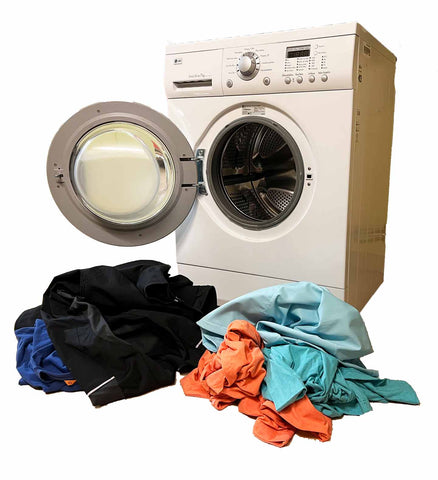Washing and maintenance of work clothes

Wash work and protective clothing often enough. A clean garment is safer and increases its lifespan. Dirt weakens, among other things, the visibility and fire protection properties of the protective clothing.
Air ventilation is a good way to freshen wool and wool blends. It is recommended to air the woolen garment after each use. Hairs and loose lint can be removed from clothing with a sticky roller. Avoid spraying hairspray, perfume and other similar products directly on the garment. Using a makeup protector hood when putting on a garment that is pulled over the head protects the garment. Underarm liners protect the garment from sweat and deodorant stains.
When work clothes need to be washed, first check the care and washing instructions for the product. The symbols tell you what kind of maintenance is recommended for the product. In addition to the symbols, there may be additional instructions such as "iron inside out" or "wash before use". Always read the product care instructions and follow them carefully. The washing temperature in the care instructions should be followed, as the durability of the clothes has been tested accordingly.
Change your work clothes when you leave work or at the latest when you arrive home. When the clothes are only used for work, they stay good longer.
Sort work clothes before washing

Wash white and coloured work clothes separately. Lint or colour may come off from dark fibres, which may stain lighter clothes.
Separate hand-washable clothes and products requiring wool or delicate washing into their own piles.
Wash certified and non-certified work clothes separately. Non-certified work clothes may bleed into the certified product, which weakens the properties of the certified work clothes.
Washing work clothes
Zip the zippers and close the Velcro fasteners, buttons and snaps before placing the garments in the washer. When closed, they do not damage the washable garment. Empty the pockets carefully.
Wash the product inside out. This protects the prints and embroideries as well as preserves the bright colours longer. Turning inside out protects the garments, as they rub against the inside of the washing machine and other garments. If the product is particularly dirty or stained, you should wash it without turning it so that the stains can be cleaned better. Avoid soaking.
Stains on work clothes should be removed as early as possible. If the stain has time to absorb into the fibres, it may be more difficult to remove. If you use a stain remover on coloured clothing, test its effect on a seam or hidden area of the garment. This way you can make sure that the stain removal does not affect the colour. Do not dry or iron the garment until the stain has been removed. Heat can set the stain permanently.

Wash full machines, this way you save energy and the environment. However, do not fill the machine too full, so that the clothes can move in the free water and clean better. If the washing machine drum is overfilled, it prevents the detergent dissolving properly.
Remember to use a detergent suitable for the products to be washed: for coloured work clothes, use a detergent intended for coloured laundry, a detergent made for white fabrics for white laundry, and wool detergent for woollen products. Follow the dosage instructions. Coloured products should be washed with a liquid detergent to avoid residue left on clothes after washing. Liquid detergents are more effective to release and break down fat than powder detergents.
Do not use fabric softener. It may damage the properties of the workwear, such as the elasticity of the fabric or the garment's ability to transfer moisture from the skin.
Drying work clothes
Remove the washed work clothes from the machine as soon as the cycle ends. This is how you avoid wrinkled clothing. Use wooden or plastic hangers for drying.
Tumble dry is a quick solution, but intense heat and spinning motion can reduce the garment's lifespan. Air dry is also an environmentally friendly choice. Think about whether you need dry clothes quickly or whether it will be enough for the next day. Delicate garments are not suitable for tumble dry. Check the drying instructions in the product's washing instructions.
Ironing work clothes

Iron only clean clothes. When ironing the clothes, follow the temperature on care label. An iron that is too hot will damage the structure of the fabric.
Steaming is recommended for wool products. When ironing wool garments, you must always use a pressing cloth to prevent shiny marks. When ironing trousers, line up the two centre seams carefully. Do only one leg at the time.






